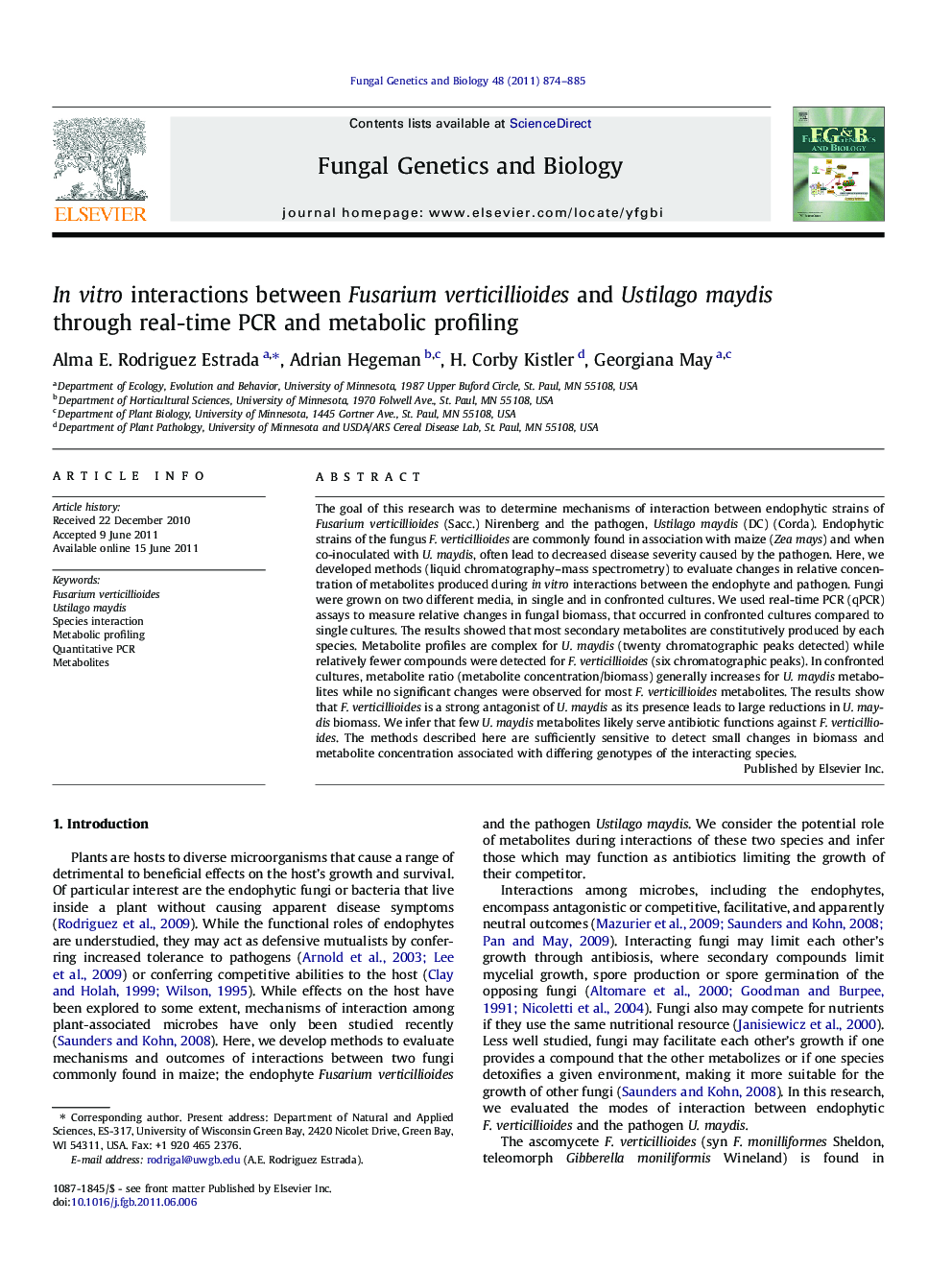| Article ID | Journal | Published Year | Pages | File Type |
|---|---|---|---|---|
| 2181072 | Fungal Genetics and Biology | 2011 | 12 Pages |
The goal of this research was to determine mechanisms of interaction between endophytic strains of Fusarium verticillioides (Sacc.) Nirenberg and the pathogen, Ustilago maydis (DC) (Corda). Endophytic strains of the fungus F. verticillioides are commonly found in association with maize (Zea mays) and when co-inoculated with U. maydis, often lead to decreased disease severity caused by the pathogen. Here, we developed methods (liquid chromatography–mass spectrometry) to evaluate changes in relative concentration of metabolites produced during in vitro interactions between the endophyte and pathogen. Fungi were grown on two different media, in single and in confronted cultures. We used real-time PCR (qPCR) assays to measure relative changes in fungal biomass, that occurred in confronted cultures compared to single cultures. The results showed that most secondary metabolites are constitutively produced by each species. Metabolite profiles are complex for U. maydis (twenty chromatographic peaks detected) while relatively fewer compounds were detected for F. verticillioides (six chromatographic peaks). In confronted cultures, metabolite ratio (metabolite concentration/biomass) generally increases for U. maydis metabolites while no significant changes were observed for most F. verticillioides metabolites. The results show that F. verticillioides is a strong antagonist of U. maydis as its presence leads to large reductions in U. maydis biomass. We infer that few U. maydis metabolites likely serve antibiotic functions against F. verticillioides. The methods described here are sufficiently sensitive to detect small changes in biomass and metabolite concentration associated with differing genotypes of the interacting species.
► Most secondary metabolites were produced constitutively by Ustilago maydis and Fusarium verticillioides during in vitro interactions. ► F. verticillioides is a strong antagonist of U. maydis leading to large reductions in U. maydis biomass. ► Few U. maydis metabolites likely serve antibiotic functions against F. verticillioides.
